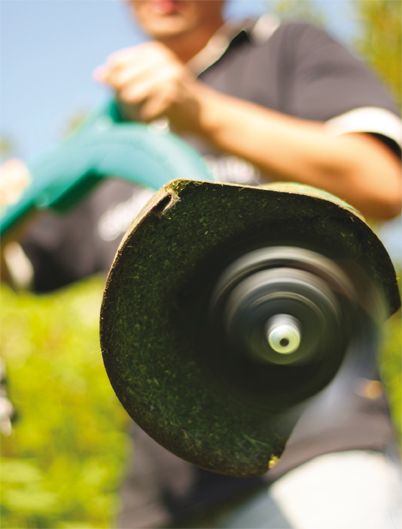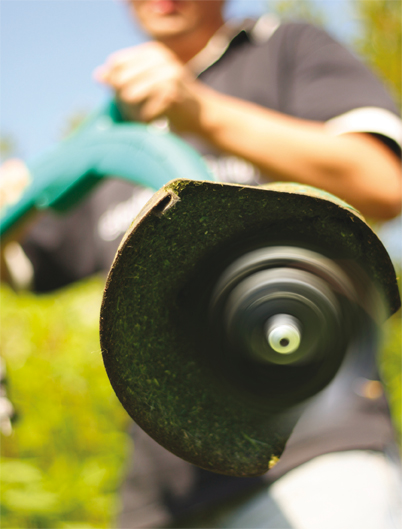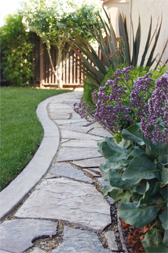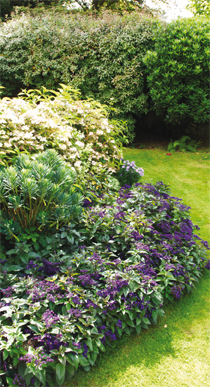Details Make the Difference

 I love getting dressed up! It is so fun to pick out a special outfit, take extra time to fix my hair and even don false eyelashes to head out for a spectacular evening. Yet there have been times when I have arrived back home from a great night out only to find that the back of my hair was out of place, my slip was sticking out, or worse yet, I had something green stuck in my teeth. The confidence I felt all evening was quickly replaced by mortification over a little something I overlooked. In the same way, many of us take great care to manicure our lawns, trim the bushes, and paint our fences, yet a few neglected finishing touches can undermine our efforts at a beautiful landscape.
I love getting dressed up! It is so fun to pick out a special outfit, take extra time to fix my hair and even don false eyelashes to head out for a spectacular evening. Yet there have been times when I have arrived back home from a great night out only to find that the back of my hair was out of place, my slip was sticking out, or worse yet, I had something green stuck in my teeth. The confidence I felt all evening was quickly replaced by mortification over a little something I overlooked. In the same way, many of us take great care to manicure our lawns, trim the bushes, and paint our fences, yet a few neglected finishing touches can undermine our efforts at a beautiful landscape.
 Clean, Sharp Edges
Clean, Sharp Edges
One of the details you can address in your yard that will have the most impact is edging. While it does take some time, the look it provides offers a great return on investment. Two areas of your lawn will benefit from proper edging: the lawn where it meets sidewalk and driveway, and the borders between the lawn and landscape beds. Having sharply defined edges will undoubtedly take your landscape up a notch and give it that “wow” factor.
When edging, be sure to wear the proper safety equipment and use a quality trimmer. Keep the level of the area you are edging at the same height as the lawn for a more manicured effect, and realize that you may have to hand-trim around tricky areas such as fences, mailboxes and swing sets. Use caution when you are edging near trees so you don’t nick the bark of the tree. It is best to either mulch around the tree, trim by hand, or use a protective wrapping around the base of the tree to prevent damage. Edging will help to maintain your lawn’s overall look, yet you should only edge when necessary. It may not need to be done every time you mow.
There are several ways to create a beautiful boundary between a flower bed and lawn. You can dig a trench or “moat” separating the bed and the grass. A channel between the flower bed and grass will not only look appealing, but it serves double duty as a way for water to escape. Installing a decorative border (like the kind you can purchase at garden centers) or a natural border (of stones or wood) helps to add that finishing touch. Laying out a mock edge in string before purchasing materials will help you calculate the exact amount of border material you need.
Beyond edging, there are a few other summertime tips to keep lawns in tip-top shape. When mowing, keeping the lawn height around 2 inches is ideal, yet in times of drought, mowing the lawn a little higher will help retain moisture during the heat of the day. Late summer is also a perfect time to try to patch up the bare spots in the lawn. “Grasscycling”—leaving the clippings on the lawn—serves to protect the grass while adding essential nutrients as the clippings decompose. But don’t let these clippings wander out onto the front walk or driveway; be sure to blow clippings off these areas at the end of your work session.
 Blooming Gardens
Blooming Gardens
Deadheading, which is the process of pinching off dead blooms, will encourage more abundant blossoms. Quickly scanning the garden and deadheading plants as you hand-water will help to encourage healthier flowers. Pruning back wayward branches as they appear on plants and shrubs will help shorten pruning time later on in the season. Make sure to keep up with weeding, as weeds can steal water and nutrients from the plants that really need them during the heat of summer. Weeds will put up less of a fight when the ground has softened after a rain, and it is best to pluck them out before they go to seed (or you will have even more weeds to pull).
If you have never started a garden journal, summer is the perfect time for planning and preparing for successful subsequent seasons. Be sure to note what plants you have and what flowers when, so that you can have a colorful garden from spring to fall. Taking photographs also helps with planning for years to come.
The Finishing Touches
In times of drought, which seem to hit our area each year, it is helpful to water your trees and shrubs thoroughly, being sure to focus on the roots and not the leaves of the plants as long as there is no watering ban in your area. Mulching around shrubbery and trees also helps to keep the moisture in, minimize weeds and protect the trunk. Check leaves, stems and trunks to ensure that no pests have taken up residence in or on plants. Purchasing a book on garden bugs will help you quickly assess whether a critter should be counted as a friend (pollinating or eating other pesky bugs) or foe (eating or damaging plants). Using slow-release, organic fertilizer is gentler during the heat of the summer, rather than using harsh fertilizers that can potentially burn plants in stifling weather.
It is wise to assess the yard periodically, keeping in mind that the little things make all the difference. Using these practical tips will keep your landscape growing and healthy this summer and for seasons to come.






